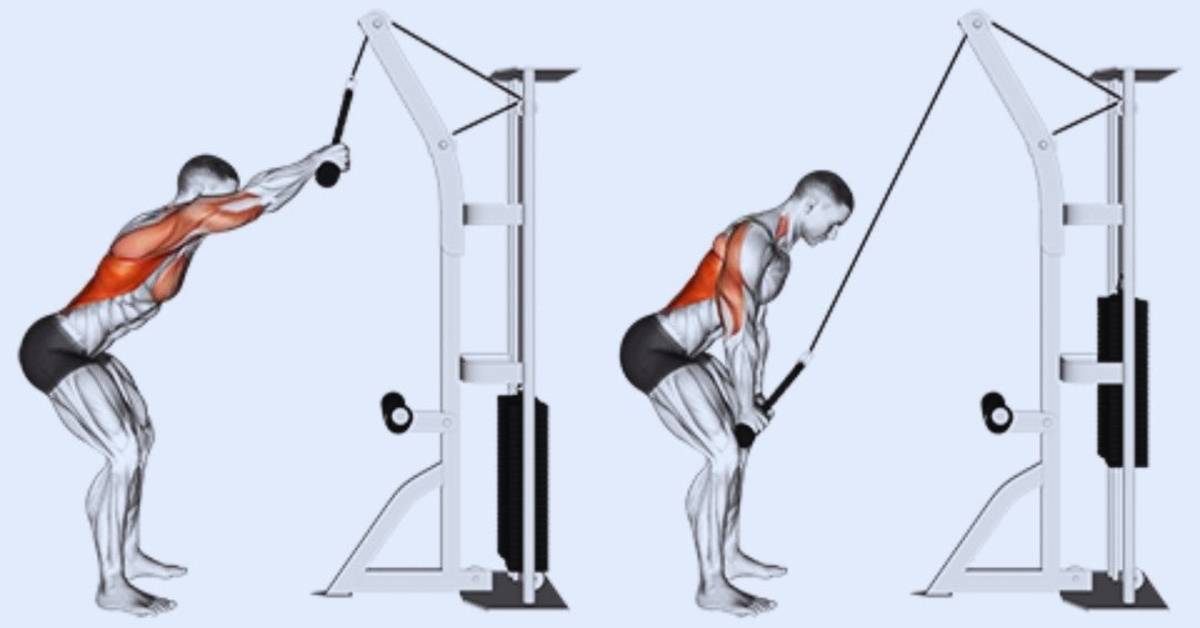If you’re looking to give your abdominal workout a boost, cable crunches is an effective exercise that can help you get maximum results. Cable crunches target the abdominal muscles and help build strength, stability, and power. In this article, we’ll cover the basics of cable crunches, how to perform them properly, the benefits of performing them, tips for getting the most out of your cable crunch workout, cable crunch variations, sets and reps to do, pre and post-workout nutrition tips, and common mistakes while performing cable crunches.
What is Cable Crunches?
It is an abdominal exercise performed using a cable machine. A cable machine is typically a weight machine found in a gym. This exercise involves using a cable machine with a rope handle to provide resistance while performing a crunch movement.
Cable crunches are an excellent way to target the entire abdominal muscle group. The movement of the cable machine helps to isolate the abdominal muscles and provides resistance for an effective workout. The cable crunch exercise is beneficial for both beginners and experienced athletes.
How to Do Cable Crunches Properly?
Cable crunches can be performed in a variety of ways. Here’s a basic guide on how to perform cable crunches:
Attach a rope handle to a high-pulley cable machine.
Adjust the weight of the machine to a comfortable level.
Kneel down facing the machine and grab the rope with both hands, palms facing each other.
Bring your hands to the sides of your head, positioning your elbows in front of your body.
Engage your core and slowly contract your abs, pulling your head and shoulders towards your knees.
Pause for a moment at the peak of the contraction, squeezing your abs tightly.
Slowly return to the starting position, allowing your torso to fully extend but maintaining tension in your abs.
Repeat for the desired number of repetitions.
Benefits of Crunches with Cable
Cable crunches provide a number of benefits, including increased core strength, improved posture, and improved balance. The cable crunch exercise works the entire abdominal region, as well as the upper and lower back muscles. This helps improve overall stability and power.
Cable crunches are also helpful for increasing muscle size and definition. The resistance from the cable machine helps to build muscle and tone the abdominal muscles. This can help to improve your overall appearance and make you look more toned and fit.
Tips for Getting the Most Out of Your Cable Ab Crunch Workout
In order to get the most out of your cable ab crunch workout, there are a few tips that you can follow.
Make sure that you are using the correct form. Proper form is essential for getting the most out of your cable crunch workout.
It’s also imperative to focus on your breathing while performing cable crunches. Proper breathing helps to increase the intensity of the exercise and can help you get more out of each rep.
Make sure that you are using the correct weight when performing cable crunches. The weight should be heavy enough to challenge your abdominal muscles but light enough so that you can still maintain proper form.
Finally, make sure that you take sufficient rest between sets. Resting allows your body to recover and will help you get the most out of your cable crunch workout.
Cable Crunch Variations
There are a variety of cable crunch variations that you can perform to target different muscle groups and add variety to your workout. Some of the most popular cable crunch variations include:
One-arm cable crunch
This variation involves performing the cable crunch with one arm while holding a weight in the opposite hand. This variation adds an extra challenge by requiring greater stabilization and engaging the oblique muscles more.
Cable Crunch with Twist
Adding a twist to the traditional cable crunch can help target the oblique muscles more effectively. To perform this variation, rotate your torso to one side as you bring your head and shoulders towards your knees, then return to the center and repeat on the other side.
Kneeling Cable Crunch with Overhead Extension
This variation combines the cable crunch with an overhead tricep extension, adding an extra challenge to the exercise. Begin by kneeling down facing the cable machine, then perform the cable crunch as usual. As you return to the starting position, extend your arms overhead and perform a tricep extension.
Seated Cable Crunch
The seated cable crunch involves sitting on a bench facing the cable machine and pulling the cable down towards your chest as you perform the crunch movement. This variation can be more comfortable for those with lower back pain and can help target the lower portion of the abs more effectively.
Standing Cable Crunch
This variation involves standing facing the cable machine and pulling the cable down towards your knees as you perform the crunch movement. This variation requires greater balance and stabilization and can help engage the core muscles more effectively.
Incorporating these cable crunch variations into your workout routine can help target different areas of the abs and add variety to your exercise routine. It’s important to use proper form and gradually increase the weight and resistance to avoid injury and get the most out of your workout.
Cable Crunch Sets and Reps
The number of sets and reps you should perform for cable crunches will depend on your fitness level and goals. Generally, beginners should aim for 3 to 4 sets of 10 to 12 reps. For more advanced exercisers, 4 to 6 sets of 12 to 15 reps are recommended.
When performing cable crunches, it’s important to focus on form and technique rather than speed. The slower and more controlled the movement, the more effective the exercise will be.
Pre and Post Workout Nutrition Tips
Eating a balanced diet is essential for getting the most out of your cable crunch workout. Before your workout, it’s important to eat a healthy meal that is high in protein and complex carbohydrates. This will help to fuel your body and give you the energy you need to get the most out of your cable crunch workout.
After your workout, it’s important to eat a meal that is high in protein and complex carbohydrates. This will help to replenish your energy stores and help your body recover. It’s also important to stay hydrated throughout your workout and after your workout.
5 Common Mistakes while Performing Cable Crunches
Using Momentum Instead of Abs
One of the most common mistakes is using momentum instead of engaging the abdominal muscles to perform the movement. This can be avoided by focusing on using slow, controlled movements, and avoiding swinging or jerking motions.
Pulling on the Neck
Another common mistake is pulling on the neck to assist in movement. This can strain the neck muscles and lead to discomfort or injury. Instead, focus on keeping your hands at the sides of your head and using your abs to lift your shoulders towards your knees.
Improper Breathing Technique
Breathing properly during cable crunches is important to avoid unnecessary strain and to maximize the effectiveness of the exercise. Avoid holding your breath or exhaling too forcefully during the movement. Instead, exhale slowly as you contract your abs and inhale slowly as you return to the starting position.
Allowing the Hips to Rotate
Allowing the hips to rotate during cable crunches can reduce the effectiveness of the exercise and place unnecessary strain on the lower back. To avoid this, keep your hips stable and focus on using your abs to lift your shoulders towards your knees.
Neglecting Proper Form
Proper form is essential for getting the most out of cable crunches and avoiding injury. Make sure to maintain proper posture throughout the exercise, keeping your back straight and your shoulders down. Additionally, use a weight and resistance level that is appropriate for your fitness level.
By avoiding these common mistakes and focusing on using proper form and technique, you can maximize the benefits of cable crunches and reduce the risk of injury.
Read Also: Monkey Feet Exercise








